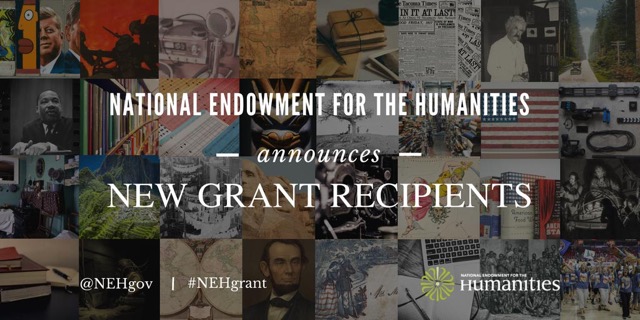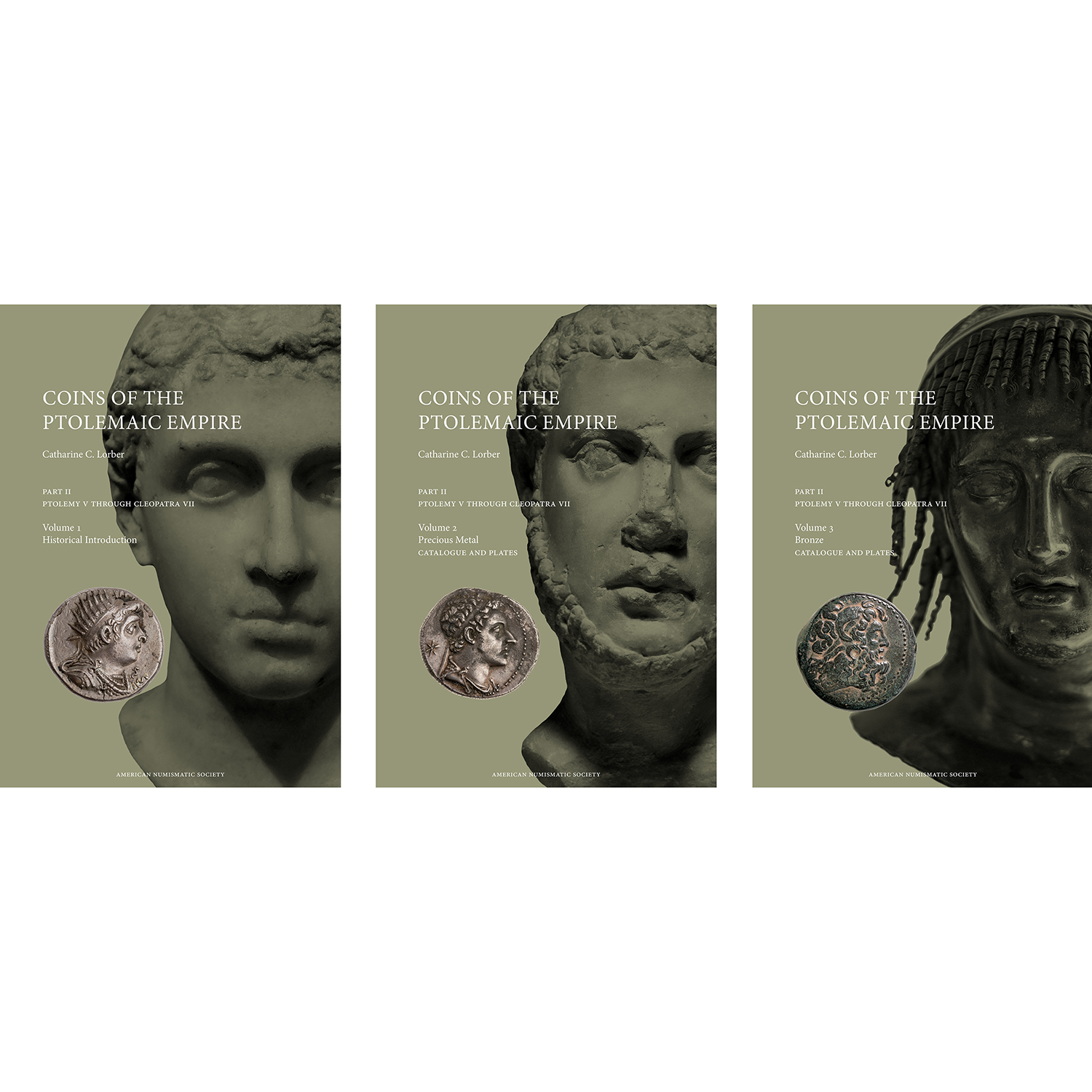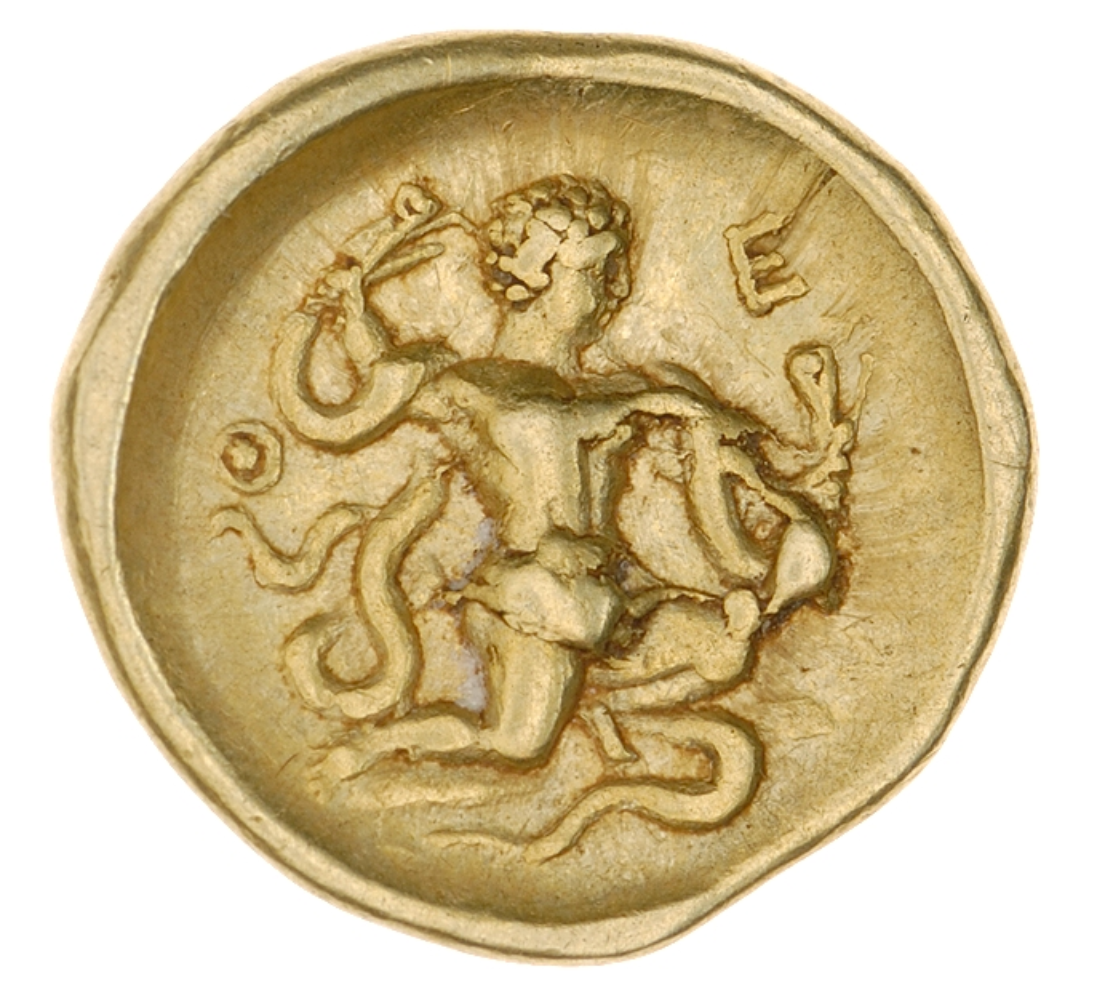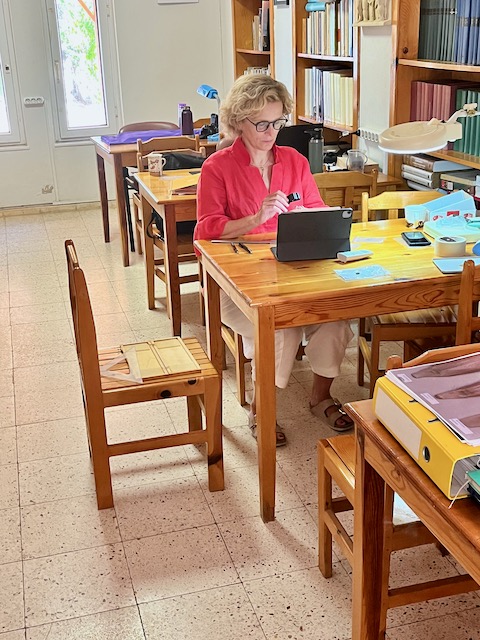The National Endowment for the Humanities Funds the ANS’s Hellenistic Royal Coinages Project
We are thrilled to announce that the National Endowment for the Humanities (NEH) has awarded the American Numismatic Society (ANS) a substantial grant of $262,000 to fund the web-based Hellenistic Royal Coinages (HRC) project. Under the direction of Curator Dr. Peter van Alfen and Director of Data Science Ethan Gruber, this three-year project (Phase 1, planned for 2017–2020) promises to radically transform the ability of students, scholars, or collectors to identify and research Hellenistic royal coinages, and to incorporate this numismatic material into broad analyses of political, economic, and social history. The funds from this grant will be used solely to hire assistants to aid in the extensive photography, cataloguing, and typology work that lies at the heart of the project.
The Background: Hellenistic Royal Coinages
Coins are an entirely unique type of evidence for the ancient world. No other class of artifact embodies the same mixture of political, social, artistic and economic concerns. The product of politicized decision making, ancient coins entered the world through state payments, but then became instruments of economic exchange more broadly, sometimes with serious and farreaching social consequences. The numbers that survive today tell us about the size of economies at a given moment and in particular places; their images and inscriptions tell us about the selfperceptions of rulers or entire societies; their findspots help us map the extent of political powers and economic influence. Ancient coins are a great deal more than just dead currency.
Within a few centuries of their invention in the seventh century BCE, coins became preferred monetary instruments, but their use was mostly limited to the Greek world. This was to change dramatically following the conquest of the Persian Empire by Alexander the Great at the end of the fourth century BCE. A sudden and massive surge in coin production began using the thousands of tons of captured Persian gold and silver in areas of the Near East that had previously not seen coinage, first under Alexander himself and later under his successors (Figs. 1–2).


The monetary consequences of this flood of new coinage and monetary metal were unparalleled, not just in the East, but in the Greek homelands as well, where many city-states stopped producing their own coins or began to produce imitations of Alexander’s coinage. After Alexander’s death in 323 BCE, his successors, including Seleucus, Ptolemy, and Antigonus began to define their individual kingdoms and soon initiated a new royal class of coinage that stood well apart from the traditional city-state issues. Taking cues from Alexander’s coins, these royal coinages were distinctive in a number of ways, not least for the ruler portraits that appeared on coins for the first time in history. Today, these remarkable coins bear some of the most distinctive images to survive from the ancient world, and form a standard part of many museum collections (Figs. 3–5).
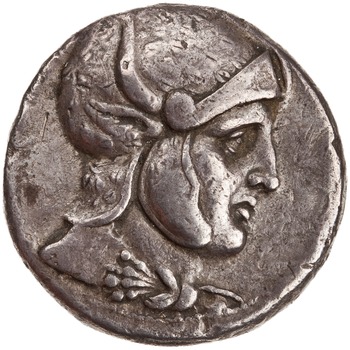
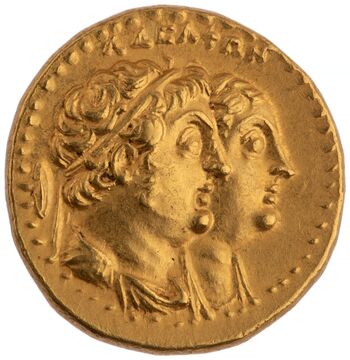

In a period from which few contemporary historical accounts survive, royal Hellenistic coinages have the potential to provide critical insights into the rise and fall of powerful dynasties in the Mediterranean and Near East between c. 323 and 30 BCE. They can inform us about large scale conflicts, the movement of vast amounts of wealth across regions, as well as the transfer of wealth between social classes. But coinage can only be set to these tasks if it can be assembled in large quantities. With the arrival of web-based tools for such assemblage, we are presented with the opportunity to bring together large amounts of evidence distributed across multiple collections, and thus to transform our understanding of an entire period of history.
Hellenistic Numismatic Evidence: Problems and Solutions
Hundreds of millions of royal coins were originally produced, hundreds of thousands exist today, and tens of thousands reside in single collections like that of the ANS, which alone holds 25,740 examples. Major collections are held in museums across the United States, as well as in the large national collections in London, Paris, Berlin, Vienna, and elsewhere. Like the ANS with its online catalogue MANTIS, most of these institutions provide web-based access to many of the royal coins in their collections. But despite this wealth of numismatic evidence available for research, the study of royal coinage is severely hampered by several problems:
1) Typologies and cataloguing. The coinages of Alexander the Great, the Seleucid kings of Syria, and the Ptolemaic kings of Egypt have been well studied and typologies have been published in print, but those for Lysimachus of Thrace, the Antigonids of Macedonia, the Attalids of Pergamum, and the Bactrian kings of Central Asia still have not been. Of the existing typological studies, some now are long out of print while the more recent studies, in print or not, are prohibitively expensive thus restricting access for many researchers, whether students, scholars, or collectors. Equally problematic is the fact that even the more recent type catalogues have now been made obsolete by new finds and revised attributions. As a result, there has been little alignment of the cataloguing in different collections making it exceedingly difficult to compare types of coins or to identify new ones across collections or even within a single collection. This global lack of alignment is not only an impediment to research, but to collection curation and infield archaeological work as well, which often depends on comparative examples for determining attributions and dating of individual specimens. It is now quite obvious that printed books can no longer serve as the ideal medium for the publication of critical numismatic typologies, which need to be widely and openly accessible and easily updatable:
The Coinage in the Name of Alexander the Great and Philip Arrhidaeus, by Martin Jessop Price
Ta nomismata tou kratous ton Ptolemaion (Ptolemaic Coinage), by Ioannes N. Svoronos
Seleucid Coins: A Comprehensive Catalogue. Part 1, Seleucus I through Antiochus III, by Arthur Houghton and Catherine Lorber, with metrological tables by Brian Kritt.
2) Monograms and symbols. Hellenistic royal coins are remarkably “chatty”; the reverses of the coins typically carry not just the name of the king, but also numerous additional monograms and symbols (Fig. 6). These are not well understood. Some we know indicate the place (the “mint”) where the coin was produced; others may indicate additional administrative information, such as the subauthority (a “magistrate”) directly responsible for the coinage. These marks are often our sole clue for deducing where and when a coin was struck. To date there has been no attempt to collate the thousands of marks known from the individual series of royal coins into a universal, searchable repository. Such a tool would immediately allow connections to be made between, for example, different series of Seleucid coins, but also between Seleucid and other nonSeleucid coinages. This would further allow deductions about attributions and dating to be verified or corrected, and would give insight into the extent to which the marks were reused across time and space, which would help to resolve the purpose of some marks.
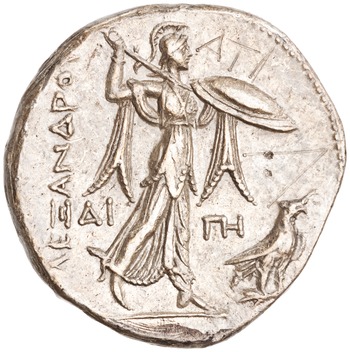
3) Access to provenance information, find-spots information, and archival resources. One of the most important and prolific scholars of royal coinage, Edward T. Newell (d. 1941), left to the ANS dozens of notebooks and unpublished manuscripts on royal coinages and hoards that remain highly relevant. Until recently access to these documents had been limited to visitors to the ANS. At the same time, files at the ANS containing notes, correspondence and photographs concerning hundreds of hoards of Hellenistic coins remain inaccessible to most researchers. These files form the basis for the terse descriptions of hoards found in the publications Inventory of Greek Coin Hoards (1973) and Coin Hoards IX (1975–2010), detailing the find-spots both for types of coins and for individual specimens. Open access to these archival resources would give researchers a better understanding of the circulation patterns of individual types of coins, and the provenance history of individual specimens.
Hellenistic Royal Coinage aims to provide a solution to all of these problems. Through the digitization of the ANS’s unrivalled collection of this material, in parallel with the conversion of existing print works to a Linked Open Data resource, it will offer a suite of open access online tools that will provide benchmark typologies for royal coinages beginning with those of Alexander the Great, the Seleucids, and the Ptolemies. In addition, it will provide a linkable and searchable repository of monograms and symbols, extensive information on findspots (hoards), and will provide full and interlinked access to critical archival resources held at the ANS.
Overview of HRC
HRC will be built around seven interlinked components, employing the principles of Linked Open Data, already successfully deployed in a number of other ANS projects (including the NEH-funded Online Coins of the Roman Empire). These include three standalone online tools each of which is devoted to the coinage of a single royal dynasty. These are: (1) PELLA, with a focus on the Argeads of Macedonia including Alexander the Great; (2) Seleucid Coins Online (SCO); and (3) Ptolemaic Coins Online (PCO). Incorporated within these three tools will be (4) a monogram and symbols repository. Two additional standalone tools, (5) Greek Coin Hoards and (6) the scanned Newell notebooks, will provide full documentation of available hoard evidence and provenance information for many individual coins. While all of the standalone tools will be interlinked, they will also be united through a portal site, (7) Hellenistic Royal Coinages, that will serve as a union catalogue for global searches and as a platform for later expansion, which will focus on adding the coinages of the remaining Hellenistic dynasties (Phase 2, post-2020).
Portions of Phase 1 have, in fact, already been completed. Early versions of three out of the seven components of HRC were launched by the ANS in 2015:
1) PELLA, launched in September 2015, has as its initial focus the voluminous coinages of Alexander (III) the Great, his immediate successor Philip III Arrhidaeus, and those produced posthumously in their names. Later versions of PELLA will incorporate the earlier Argead kings from Alexander I to Philip II. The basic concept of PELLA, like that of SCO and PCO, is to establish stable URIs for each known variety of Alexander’s coinage and then to provide a highly functional tool for identifying individual types of coins within a larger dynastic series, to provide illustrations, information, and statistical analyses on as many examples of the individual types as possible, and to provide as much information as possible on hoards containing examples of the individual types. The typology of the current version of PELLA (v.1) is based on that of Martin Price’s Coinage in the Name of Alexander the Great and Philip Arrhidaeus (British Museum 1991).
A typical page on the PELLA website, that for Price type 4 for example, provides: (1) a typological description (with links to the Nomisma.org thesaurus); (2) a map of hoard finds (with links to the relevant coin hoard page; see below); (3) links to and illustrations of 47 examples of Price type 4 found in the collections of the ANS and Bode Museum in Berlin; and (4) statistical analyses of the weights and die axes of these 47 coins. All told, the current version of PELLA catalogues 4,070 separate types of coinage with links to 18,676 individual examples from thirteen institutions located in the US, England, France, and Germany; by the end of 2017, thousands of more additional examples will be added from collections in the US, France, and England. Continued development of PELLA has become a collaborative, international initiative, not just in order to add more examples of individual types, but to edit and revise as well. Since Price’s 1991 typology is in need of extensive revision due to advances in scholarship over the last 25 years, a consortium of nearly a dozen researchers based in the US, England and France, is currently working to revise the typology, which will appear in PELLA v.2, planned for late 2017. PELLA will then serve as the model for SCO and PCO, both in terms of functionality and development. With initial development work spearheaded by the ANS, others elsewhere will contribute to and facilitate further development of these tools.
2) In February 2015, the ANS launched a beta version of the Greek Coin Hoards website based on the 1973 ANS co-publication Inventory of Greek Coin Hoards (IGCH ), which lists and provides basic descriptions of 2,387 hoards, the majority of which date from the Hellenistic period. The current version (v.1) feeds hoard find-spot information to PELLA, and allows for rudimentary searches of hoard information. Further development of the tool is necessary, however, to achieve its full potential. This will include the incorporation of data from an additional c. 2,400 hoards derived from the print publications Coin Hoards (vols. IX), links to the catalogue records of coins found in individual hoards currently held in public collections, links to bibliography on the individual hoards, and, most importantly, the incorporation of the unpublished archival material held at the ANS on individual hoards. Development of coinhoards.org has been funded to date by the ANS and Stanford University.
3) The ANS maintains an online archives website, ARCHER. With a grant from the Gladys Krieble Delmas Foundation, the ANS digitized more than 3,500 pages in 43 notebooks of Edward T. Newell for addition to ARCHER in 2015 (Fig. 7). This was done in such a way as to allow interlinking between the digital notebooks, the ANS’s online numismatic catalogue (MANTIS), and online library catalogue (DONUM). Thus, if a coin mentioned in the notebooks currently belongs to the ANS, readers are directed to that coin’s record in MANTIS; if that coin had been published by Newell, readers are directed to the DONUM record for that publication; and if Newell discusses a hoard listed in IGCH, readers are directed to the relevant coinhoards.org page. To date, roughly 15% of the groundwork for this cross-linking between the notebooks and other ANS catalogues has been completed. A great deal more work remains to complete this as well as to link the monograms and symbols noted by Newell to the planned repository for these marks.

The major work that remains for Phase 1 of HRC is then twofold: (1) adding functionality to existing tools; and (2) building new tools. Once completed, Phase 1 of HRC will have a transformative effect on our approach to this important body of material. In a matter of seconds, anyone from anywhere there is an internet connection will be able to gather a wealth of critical information on royal coinages for a variety of purposes, whether for academic research, museum cataloguing, or just general interest.
We thank the NEH for their generous support of this project. We also ask that should you have the desire to do so, please be vocal in your support of this important funding agency for the humanities at this critical juncture in its 50-year history.


